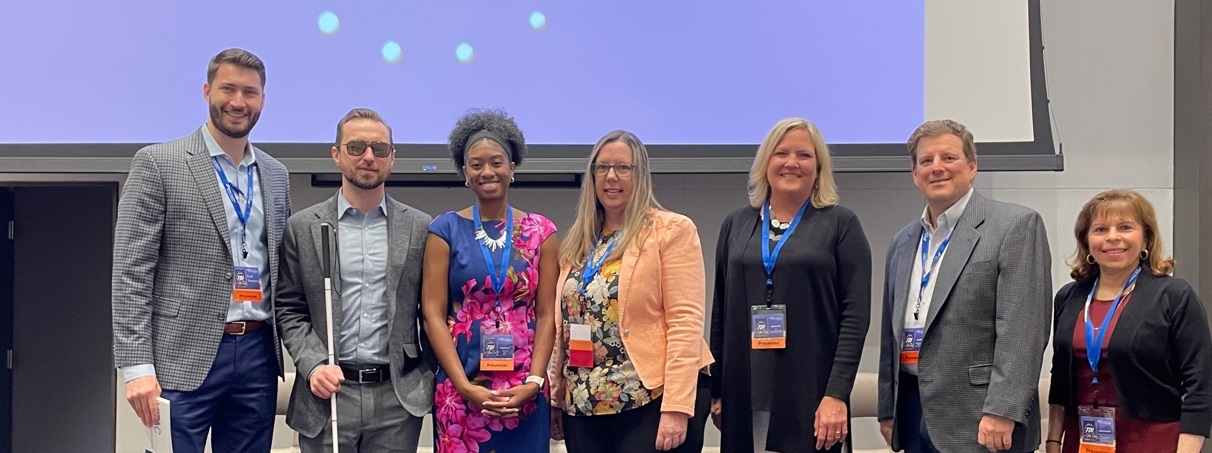Caption quality and reporting captioning concerns took center stage at a recent panel discussion at TDI’s Biennial Conference.
TDI (Telecommunications for the Deaf, Inc.) focuses on driving accessible communication and advocacy for the deaf and hard-of-hearing communities, advocating for full accessibility, equity, and inclusion in information and communications technology, and full access and equitable participation in information and communication networks.
The panel, led by VITAC and Verbit, focused on how viewers can and should report caption quality concerns they see while watching programs on television.
Panelists included VITAC’s Heather York, NBCUniversal’s Crystal Evans, the National Captioning Institute’s Darlene Parker, Spectrum’s Stacey Romero, and the National Association of Broadcaster’s Larry Walke. They fielded a wide range of audience questions, including those on general caption quality, how caption errors occur, the differences between human- and ASR-produced captions, ways to caption ambient sounds (background noises), and whether it’s possible to stop captions from cutting off when a program goes into a commercial.
The session highlighted the importance in viewers being specific in noting such things as caption accuracy, placement, delays, or missing words and punctuation as well as where, when, and how they’re viewing captions.
Tips for Reporting Caption Concerns
Accessible, readable captions aren’t a privilege – they’re a right. And one of the ways to bring about change in the quality of captions you see on air is to let your voice be heard.
Networks are required by law to caption almost all programming, and your cable provider is required to ensure those captions get to your television. All stations and cable companies are required to provide captioning contact information on their website and cable bill.
If you see a television program that has no captions, missing captions, delayed captions, or captions that generally are unreadable, it’s a good idea to write to your stations first and alert them of the issue.
If there is no response, you can file a complaint with the Federal Communications Commission (FCC). The FCC complaint form will ask for your name, email address, and description of the problem. It also will ask for specific information, such as the name of the program you tried to watch, the date and time you tried to watch it, the network/channel you were watching, and a description of the captioning problem.
Filing a complaint about the quality of captions you see is a way to alert your stations or the FCC of a problem that all parties (the commission, broadcaster, network, and captioning provider) can work through to find a solution.
At VITAC, our professional and responsive customer service teams are available to help with caption-related questions. We strongly believe in making accessible content the standard. That’s why, for more than 35 years, we’ve worked with advocacy groups and caption viewers throughout the country to promote the need for accessibility and represent consumers with hearing loss.




